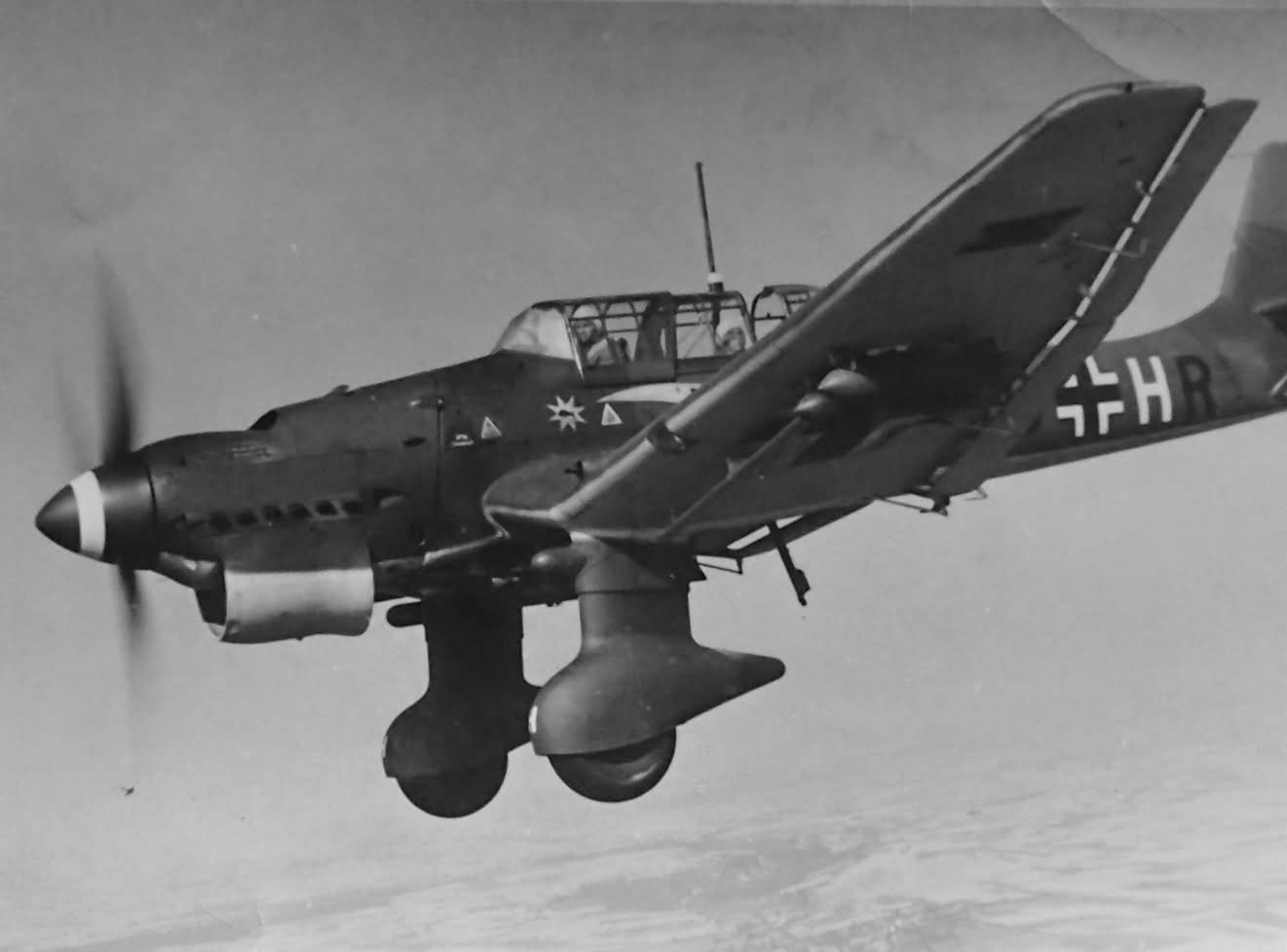
This Day in Aviation History
September 17th, 1935
First flight of the Junkers Ju 87.
The Junkers Ju 87 or Stuka (from Sturzkampfflugzeug, “dive bomber”) was a German dive bomber and ground-attack aircraft. Designed by Hermann Pohlmann, it first flew in 1935. The Ju 87 made its combat debut in 1937 with the Luftwaffe’s Condor Legion during the Spanish Civil War and served the Axis forces in World War II.
The aircraft was easily recognisable by its inverted gull wings and fixed spatted undercarriage. Upon the leading edges of its faired main gear legs were mounted the Jericho-Trompete (“Jericho trumpet”) wailing sirens, becoming the propaganda symbol of German air power and the blitzkrieg victories of 1939–1942. The Stuka’s design included several innovative features, including automatic pull-up dive brakes under both wings to ensure that the aircraft recovered from its attack dive even if the pilot blacked out from the high g-forces.
The Stuka operated with considerable success in close air support and anti-shipping at the outbreak of World War II. It spearheaded the air assaults in the invasion of Poland in September 1939. Stukas were crucial in the rapid conquest of Norway, the Netherlands, Belgium and France in 1940. Although sturdy, accurate, and very effective against ground targets, the Stuka was vulnerable to contemporary fighter aircraft, like many other dive bombers of the war. During the Battle of Britain its lack of maneuverability, speed and defensive armament meant that it required a heavy fighter escort to operate effectively. After the Battle of Britain the Stuka operated with further success in the Balkans Campaign, the African and Mediterranean theaters and the early stages of the Eastern Front where it was used for general ground support, as an effective specialized anti-tank aircraft and in an anti-shipping role. Once the Luftwaffe lost air superiority, the Stuka became an easy target for enemy fighter aircraft on all fronts. It was produced until 1944 for lack of a better replacement. By the end of the war ground-attack versions of the Focke-Wulf Fw 190 had largely replaced the Stuka, but Stukas remained in service until the end of the war.
An estimated 6,500 Ju 87s of all versions were built between 1936 and August 1944….
Source:
Wikipedia, Junkers Ju 87: http://gstv.us/1gsAbVp
YouTube, Wings of the Luftwaffe: Ju-87 “Stuka”: http://gstv.us/2gWrS6S
Please consider supporting Gazing Skyward TV by using our affiliate links when shopping online and becoming a Patron on Patreon. http://gazingskywardtv.com/donate/
Photo from: http://gstv.us/2d1gR5W
#avgeek #Junkers #Ju87 #Stuka #DiveBomber #military #ww2 #warbird #German #aviation #history #fb

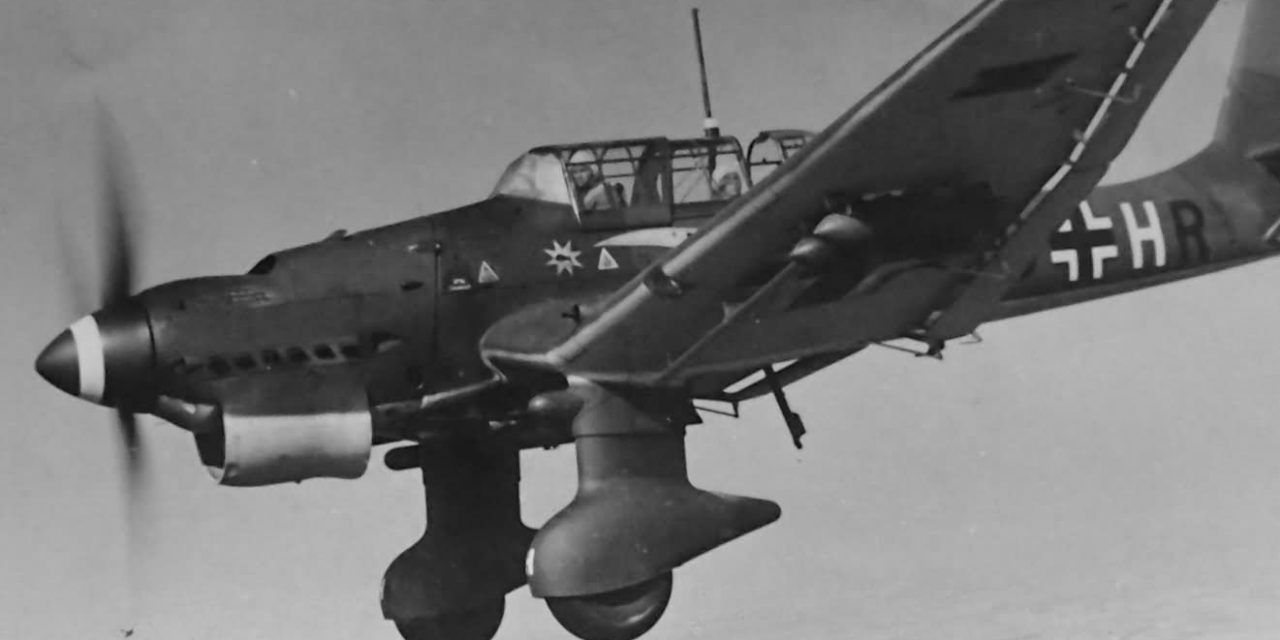
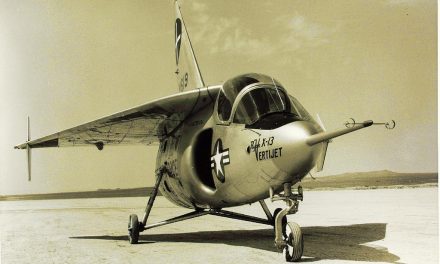
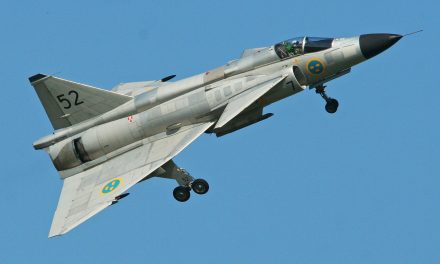
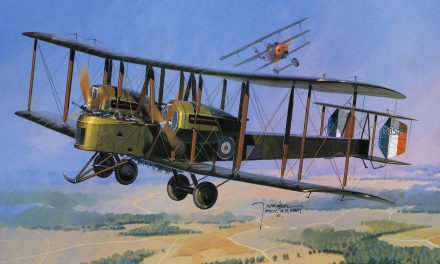

Recent Comments